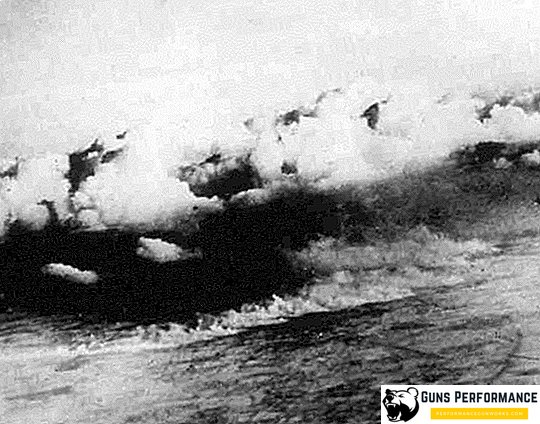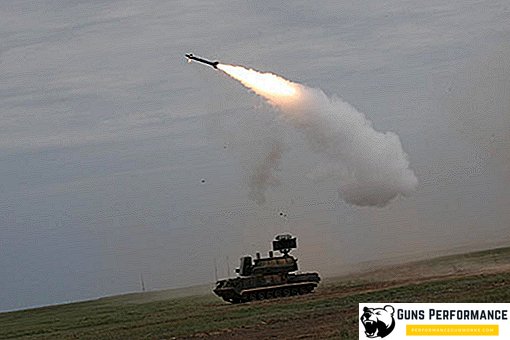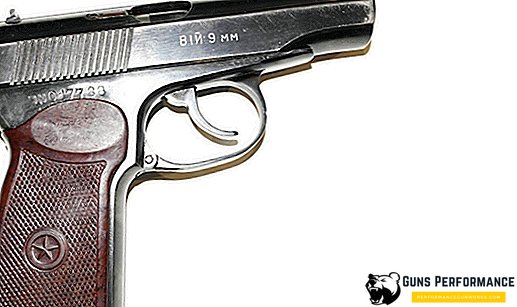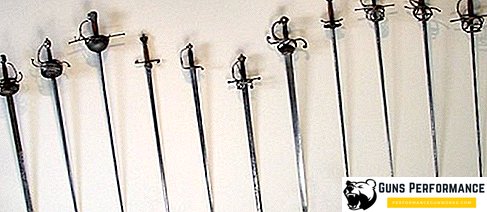As you know, gas masks are designed primarily to protect the respiratory organs, eyes and skin of the face from the penetration of harmful elements that could be contained in the air taken in. To date, a huge number of various gas mask systems have been created, and it is not so easy for an ordinary person to understand their purpose for all of them.
Purpose of a gas mask
The invention of gas masks associated with the use of the German army during the First World War, a new tactic - gas attack. The gas was extremely difficult to use, it was killing slowly and painfully, but with a huge area of damage at that time.

Two weeks after the first attack, the first personal protective equipment against the poisonous substance began to appear. Initially, they tried to defend themselves with dressings impregnated with acids, neutralizing agents, and then they thought about more effective countermeasures. They were energetically developed by the military and civilian departments of the whole world.
Gas mask and respirator: distinctive features
Personal protective equipment is divided into two main categories: gas masks and respirators. The main difference between these two products is that the respirator does not close the entire face, but only the area of the nose and mouth - everything else remains open. Whereas a gas mask covers almost the entire head, the eyes and protects both the respiratory organs and the surface of the entire head from the penetration of harmful elements.
Types of gas masks
The main purpose of most species gas masks is to protect the respiratory tract. In terms of protection methods and types of structures, two types of gas masks are distinguished: filtering and insulating.
GP filtering gas mask
It is used with a filter box and is designed to protect the respiratory system using mechanical filters or chemical reactions. Those who wear such a gas mask continue to breathe the surrounding air mixture in a purified form.

Such gas masks provide protection only for a limited time and only against the established type of malicious elements. This is because the filter box is not universal and, moreover, will require replacement after working off its resource. Filter life may vary. Their action can last for a few minutes, or even a day, and depends on the degree of habitat damage.
Isolating gas mask (PI)
This unit is equipped with a compressor box. The mask is designed to protect the respiratory organs in an atmosphere of oxygen deficiency. A distinctive feature of an insulating gas mask from the filter is that its owner can receive a breathing mix not from the external environment.
This type of gas mask is divided into two types, depending on the source of the breathing gas. The first type is an autonomous breathing apparatus, the owner of which has its own compressor box with a compressed air balloon. The second type is a hose gas mask (respirator) that receives air flow from an external source, for example, from a pipe with compressed air.
In addition, often used combined versions of insulating gas masks. For example, when the main air flow comes through the hose, but in case of emergency there is also an autonomous air tank.
Types of gas masks by scope
By areas, gas masks are divided into military, civilian, industrial, and even children's.
Military Gas Mask (PMK)

Military gas masks have a high level of reliability and versatility and are included in the standard equipment of all military personnel. In addition, they are used by some militarized structures. For example, a general-purpose gas mask can be used in the Emergencies Ministry and similar organizations.
Civilian gas mask (GP)
May be issued to the public in an emergency. These gas masks are fairly cheap to manufacture, but are generally reliable. Outwardly, they are not very different from military modifications, if you do not pay attention that the GP materials are not as high as those of military models.
Industrial gas mask (VK)
This is a special kind of gas masks for working with hazardous chemicals. As a rule, such gas masks are embedded in the OZK or similar protective equipment.
Children's gas mask
This modification is used to protect the respiratory organs of children and adolescents, it is smaller. By the way, there are also infant devices - designs with rubber chambers in a metal frame, in which the child is placed entirely, where air is then forced by means of furs.
Purpose of civilian gas masks

The main purpose of all civilian gas masks is to protect the population caught in the foci of environmental contamination with a variety of harmful substances. Such devices are easy to use and low weight, the ability to breathe purified air for a limited time.
Gas Code Rules
The device with a possible threat worn on the stomach in a special bag, and buttons on it should be unbuttoned. The procedure for donning a gas mask:
- Inhale;
- Hold the breath;
- Close eyes;
- Take the gas mask out of the bag with your left hand;
- Get rid of the plugs in the filter box;
- Four fingers of each hand to put inside the mask of the gas mask, and the large left outside;
- Attach the bottom of the mask to the chin area;
- Exhale;
- With a sharp movement tighten the mask of the gas mask from the bottom up and straighten it so that there are no wrinkles;
- Open eyes;
- To move the bag to the side so as not to hinder the freedom of movement.

When the devices are issued for a long time, it is necessary to monitor their condition. They need to clean, wipe the glass mask. In addition, the output level in the filter box should be monitored (the time and conditions for its replacement are usually written on it).
And the most important thing is to try to get out of the affected area as quickly as possible.













